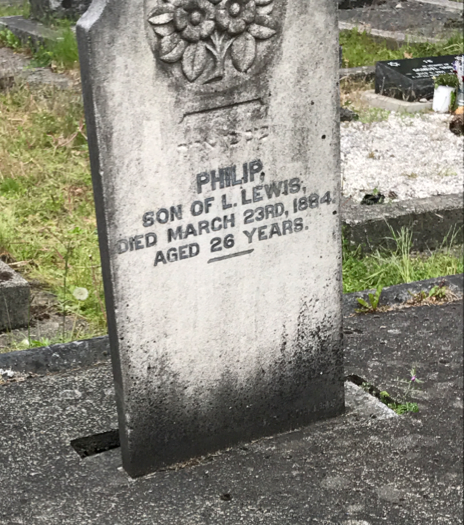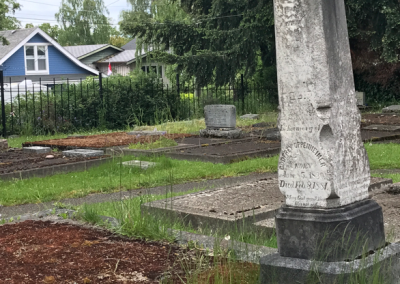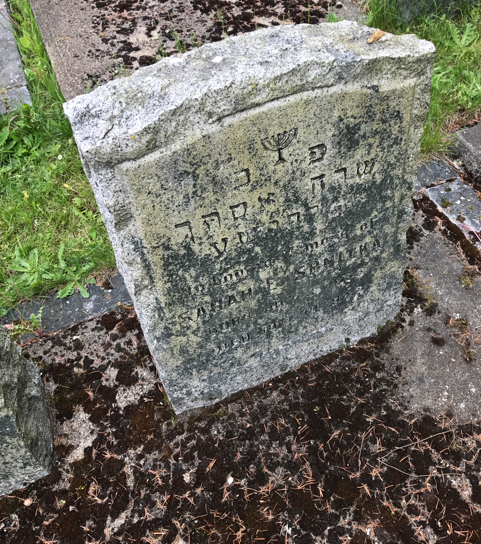Day 2 in the Jewish Cemetery. Tuesday was a day full of information since as a class we learned how to record the monuments (i.e. headstones). This is one of the larger goals of this class and by extension this project, for the Jewish Community that this cemetery serves.
It’s an important goal since it allows us to create a full record of the cemetery so no person is truly forgotten. As well it records the damage to these monuments over time, which is crucial in the conservation of this cemetery and the final resting place to these people.
It involves a lot of codes for the recording forms which can take awhile to figure out while flipping back and forth through our UVic Anth 367 course package in the rain. But it was a very worthwhile task since it allows us to connect these people that the monuments memorialize to family from across the country and around the world! And to be a part of something so large and important is amazing.
First we record the condition of the monument, which can range from sound and in place to a monument that has been cracked and broken with time. A lot of the condition of the monument depends on the material of it which is the next piece of the puzzle that we record. We also look at the additional elements to the grave which in the case of this cemetery involves a lot of body stones that cover the entire grave site of the individual people. This seems to be a popular trend for older graves…a question for another day! The range of the materials used in the cemetery add a beautiful diversity to it from white marble to pink granite, as shown in the photo (right).
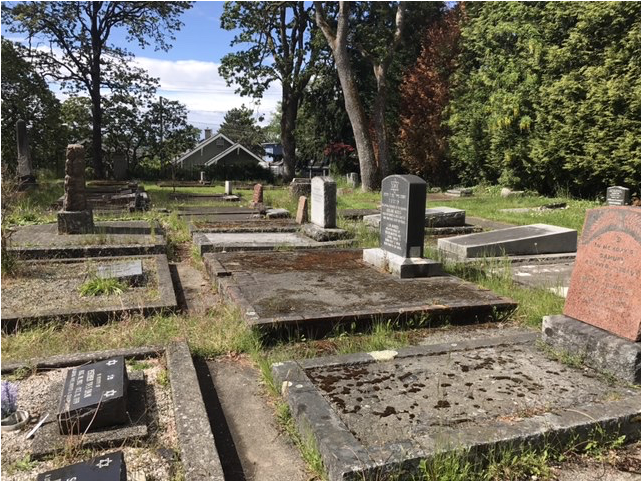
A picture of the Jewish Cemetery when the sun was shining showing the tranquility of it. (photo taken by Morgan King)
The next part of the monument that we record involves the inscription. This gets a little complex and confusing with recording the shape of the text panel and the text and how they are inscribed or not on the monument. The letter style is recorded then the inscription itself or at least as much as we can read, as well as any Hebrew written. Then any decorative motifs covering the monument which range from vines to the Freemason symbol are recorded. These motifs are so interesting because they can show a part of the person’s life you wouldn’t know about before.
An attempt at a sketch is added and lastly a photo is taken of the monument and any additional elements. Eventually this photo and some of the information of the monuments will be made public on a website to allow people from all over the world to find their family in this cemetery.
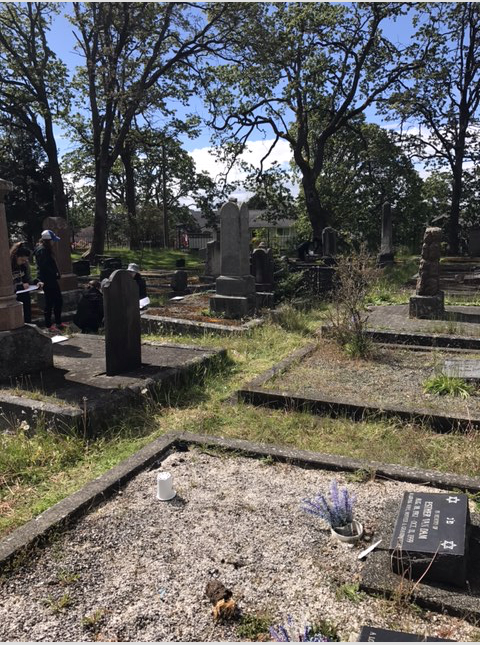
Students hard at work recording monuments. (photo taken by Morgan King)
The last piece of data that we recorded was the damage inflicted on the monuments, which can be done by many forces of nature. To name a few that I saw today (shown in the photos below): pollution deposit that creates a dark staining, biological damage such as lichen and moss growth, and surface loss making the inscription hard to make out. Understanding the damage to the monuments will allow those caring for the cemetery to work on conserving the graves. This conservation is significant for the surviving family members of those buried there since it allows these monuments to grace the Jewish Cemetery for many years to come as well as keeping an important piece of history. Some information about the conservation of gravestones can be found at http://www.gravestonepreservation.info/articles/cleaning-gravestones-monuments-stone-sculptures.
Today was amazing, interesting, and frustrating all at once. Frustrating because of the loss of some information due to the damage inflicted by weather on these monuments. But amazing due to all the knowledge we gained. And I look forward to our next field day where Carl Hughes from Meadowlark Memorials will be talking to us about conservation and how we can save these monuments from disrepair.
Oppenheimer
The Oppenheimer family monument is an obelisk that marks a large family plot. The plot is covered with a concrete fill inside granite kerbing. The concrete is covered in moss and lichen and cracked in several places, causing the obelisk to list. The marble of the obelisk is stained by pollution, bacterial growth, and some biological growth, like algae.
Philip Lewis
Philip Lewis’ headstone is marble with lead inlaid letters. There is pollution staining and evidence of staining caused by bacterial growth. The marble is set in granite, which was set in concrete, but as the soils have subsided, the monument has begun to lean. (Photo by Morgan King)
